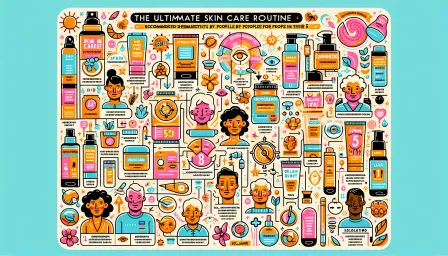The Ultimate Guide to Retinol and Vitamin C: Skincare Game-Changers

Discover the benefits, differences, and the right way to incorporate retinol and vitamin C into your skincare routine. This comprehensive guide is your key to radiant and healthy skin.
In the world of skincare, two ingredients often stand out for their transformative benefits: retinol and vitamin C. With various formulations and conflicting advice, it can be challenging to understand their proper use. This guide aims to demystify these skincare giants, highlighting their individual benefits, potential side effects, and how to incorporate them into your routine effectively.
What is Retinol?
Retinol is a derivative of vitamin A and is widely recognized for its potent anti-aging properties. It promotes cell turnover, stimulates collagen production, and helps to reduce the appearance of fine lines and wrinkles. Retinol is available in various forms and strengths, from over-the-counter products to prescription-based treatments.
Benefits of Retinol
- Reduces fine lines and wrinkles
- Improves skin texture and tone
- Boosts collagen production
- Minimizes hyperpigmentation and age spots
- Unclogs pores and prevents acne breakouts
Potential Side Effects
While retinol is beneficial, it can cause skin irritation when first introduced. Common side effects include dryness, redness, and peeling. To minimize irritation, start with a lower concentration and gradually build up your skin's tolerance. Always use sunscreen during the day, as retinol can make your skin more sensitive to UV rays.
What is Vitamin C?
Vitamin C, also known as ascorbic acid, is a powerful antioxidant that helps protect the skin from environmental stressors like pollution and UV damage. It also plays a crucial role in collagen synthesis, brightening the skin and reducing the appearance of dark spots.
Benefits of Vitamin C
- Brightens the complexion
- Reduces the appearance of fine lines and wrinkles
- Fades hyperpigmentation and dark spots
- Protects against environmental damage
- Promotes collagen production
Potential Side Effects
Vitamin C is generally well-tolerated, but some individuals may experience mild irritation or allergic reactions. To avoid adverse effects, conduct a patch test before applying a new vitamin C product to your face. Additionally, store vitamin C products in a cool, dark place to prevent oxidation.
Using Retinol and Vitamin C Together
Both retinol and vitamin C offer significant benefits when used individually, but can they be used together for enhanced results? The answer is yes, but with caution. Combining these ingredients can potentially cause irritation, especially for those with sensitive skin.
How to Incorporate Retinol and Vitamin C Into Your Routine
- Start Slowly: Introduce each ingredient separately to assess how your skin reacts. Gradually increase usage frequency over time.
- Time Your Application: To minimize potential irritation, use vitamin C in the morning (followed by sunscreen) and retinol at night.
- Layer Correctly: If you prefer using both ingredients at the same time, apply vitamin C first, allow it to absorb completely, and then apply retinol.
- Moisturize: Use a hydrating moisturizer to mitigate any dryness or irritation caused by these potent ingredients.
Choosing the Right Products
When selecting retinol and vitamin C products, consider factors like concentration, formulation, and your skin type. For retinol beginners, start with a lower concentration (0.25% to 0.5%) and increase as your tolerance builds. For vitamin C, serums with a concentration of 10% to 20% are generally effective.
Recommended Retinol Products
- Over-the-counter retinol creams and serums
- Prescription-strength retinoids for more severe skin concerns
- Retinol-infused moisturizers for added hydration
Recommended Vitamin C Products
- Vitamin C serums with L-ascorbic acid
- Vitamin C creams and lotions for sensitive skin
- Stabilized vitamin C formulations to prevent oxidation
Conclusion
Retinol and vitamin C are powerhouse ingredients that can work wonders for your skin, provided they are used correctly. Understanding their individual benefits, potential side effects, and the right way to incorporate them into your routine is crucial for achieving the best results. By following the guidelines outlined in this article, you can harness the full potential of these skincare game-changers and enjoy a radiant, youthful complexion.



























